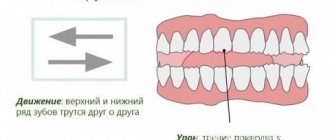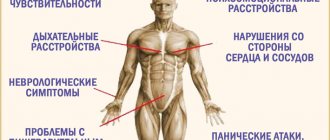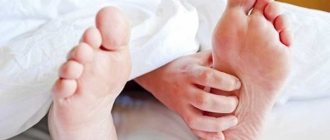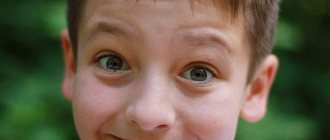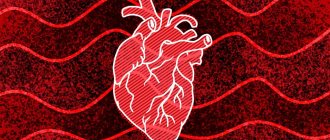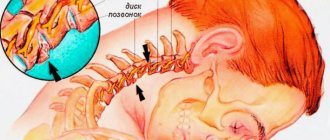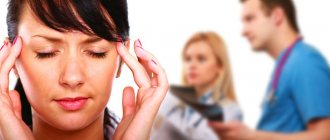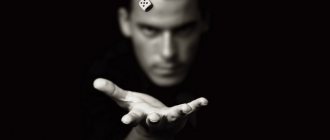It is almost impossible to foresee such a danger when children fall and hit their heads. If a child does not fall and hit himself, he will not be able to learn to walk. After a child hits his head, he needs timely first aid. If you do nothing, the consequences may be the least expected, because the head contains one of the most important human organs - the brain. Let’s find out in more detail how to help a child hit his head, and what this can lead to.
Child develops fever after hitting head
Often, after a strong blow to the head, a child may experience an increase in temperature, which requires immediate clarification of the causes of this phenomenon. Why did the temperature rise after the impact, and how serious is it? The reasons for the increase in temperature are the following factors:
- After hitting the head, the child experiences severe stress, which results in an increase in body temperature.
- Intoxication or development of inflammatory processes in the body.
- Receiving serious injuries, resulting in the patient going into shock.
- With open wounds after hitting the head, infection can enter the body.
- The negative effect of certain drugs on the body after unsuccessful attempts to relieve pain spasms.
Most often, the temperature does not increase immediately after the child hits his head, but after some time on 2-3 days. Moreover, the temperature can be either low-grade, which often occurs during inflammatory processes, or febrile up to 39-40 degrees.
It is important to know! Body temperature in children above 38-38.5 degrees should be brought down using antipyretic drugs.
The duration of maintaining the temperature depends on what caused its increase. If, after the incident, a high temperature is maintained for a long time, then on the third day you should consult a doctor. If the child’s injury site results in external bleeding, then in this case you should also consult a doctor immediately.
After a child hits his head, parents should provide complete rest for him. It is necessary to put him to bed, assess the condition of the injury, and also measure his temperature. Even if the child starts bleeding, the mother should not panic; after calling an ambulance, first aid must be provided. First you need to calm the child if he cries, and then resort to using cold objects to relieve swelling.
It is important to know! It is unacceptable to apply various objects that can cause infection to an open injury.
If, after the ambulance arrives, the doctor strongly recommends going to the hospital and undergoing a detailed examination of the brain, then you should not refuse this. If the cause of the temperature increase is not identified in a timely manner, the consequences may be irreversible. To reduce high fever, it is necessary to resort to the use of antipyretic drugs exclusively for children, such as Nurofen, Paracetamol and Ibuprofen.
Of particular danger is a blow to the head, after which the following symptoms develop:
- Nausea and vomiting.
- A sharp deterioration in health.
- Headaches and dizziness.
- Loss of consciousness.
- Bleeding from a wound or nose.
- Inappropriate behavior.
- Weakness and drowsiness.
- Temperature increase.
All these factors indicate the seriousness of the injury, to eliminate the consequences of which you need to contact a traumatologist.
Postoperative osteomyelitis
Treatment of bruises of the soft tissues of the leg can be done independently for minor injuries if minor symptoms appear. In other cases, you need to go to the emergency room. If a child is injured, consultation with a doctor is necessary. Treatment is performed as follows:
- During the acute period, rest is necessary. You need to walk less using a cane. For severe bruises, especially on the back of the foot, a splint is applied.
- How to treat soft tissue bruises with pain and inflammation? In this case, non-steroidal anti-inflammatory drugs are used. If mild to moderate bruises are found, they are used in the form of ointments. For severe injuries, systemic medications are used. The most effective include Movalis, Celebrex, Nise, Arcoxia. They have few side effects.
- Heat exposure is required. After 3 days from the injury, when the risk of bleeding has been eliminated, thermal procedures are used to speed up the healing and resorption of the hematoma. Dry heat is used for bruises with swelling and extensive hematoma. A warm heating pad, paraffin applications, and a blue lamp are used. The duration of the procedure is 40 minutes once a day.
- Gymnastics is considered mandatory from 2-3 days. At first, the exercises should be gentle, and the intensity should be increased as you recover. With the help of gymnastics, it will be possible to prevent contractures in the joints, improve microcirculation, and restore leg function.
- Physiotherapy procedures are performed that are considered effective in treating bruises. They eliminate soft tissue swelling and reduce pain. The bruise goes away faster and rarely leads to complications. Magnetic therapy, UHF, electrophoresis, laser therapy, and amplipulse are used.
- Massage is performed after 7-10 days. Lymphatic drainage technique is prescribed when swelling and large hematomas are not able to resolve on their own.
Peculiarities of parental actions with varying degrees of severity of injuries received
What do parents need to do to provide the right help for their baby? When you hit your head, various consequences can occur, depending on the severity of which first aid is required. Let's consider what the consequences of a blow may be, and how to properly provide first aid.
The appearance of a hematoma at the site of impact
If a hematoma occurs at the site of the impact, or in other words, a lump, then in this case you will need to apply something cold to the site of injury. Applying cold objects is required only for a short time. If, as a result of receiving a blow, a child is diagnosed with symptoms of vomiting, then in this case it is necessary to consult a doctor. This may indicate that the baby has a concussion, which leads to the development of negative consequences.
It is important to know! If a child has lost consciousness, then applying a cotton swab moistened with ammonia to his nose is strictly prohibited. This is an effective method to bring the baby to his senses, but no one thinks about the fact that caustic fumes cause a chemical burn to the respiratory system.
An abrasion appeared at the site of the impact
Children can hit themselves at absolutely any age, so parents should always have knowledge of how to properly provide help. Abrasions that show signs of bleeding should be treated with hydrogen peroxide, and the best option is to use chlorhexidine. This is one of the best medicines, with which it is possible to destroy up to 99% of various bacteria, while peroxide kills no more than 45%.
After disinfecting the wound, you can immediately prevent the penetration of bacteria into the body. If the blood does not stop flowing, then you should resort to calling an ambulance. While the ambulance is on its way, a sterile bandage should be applied to the injury to try to stop the bleeding.
If the baby complains of severe pain, then parents are strictly contraindicated to give him painkillers. After all, with the action of painkillers, it will be difficult for the doctor to make a diagnosis. It is also necessary to inspect other parts of the child’s body, because it is possible that if the baby falls, he may hit his arms or legs.
After hitting his head, the baby fell asleep
After hitting the head, the child may fall asleep after a while. Parents immediately believe that everything has passed and the doctor’s help is not required. Even if after waking up the baby does not complain about the development of negative symptoms, then the injury should not be ignored. In any case, it is necessary to show the child to the doctor to exclude the development of complications.
If, after the baby wakes up, he begins to be capricious and also refuses to eat food, then this may be a sign of a concussion. A concussion, even a minor one, necessarily affects the health and behavior of the baby. After children receive a head injury, they show signs of sleep disturbance, resulting in them sleeping lightly and for short periods of time or having trouble falling asleep at all.
After sleep, the temperature may drop, after which the baby becomes cheerful and active. Often this phenomenon indicates a false recovery, after which the baby’s health condition worsens significantly. Deterioration in well-being in this case manifests itself through the development of the following signs:
- Nausea and vomiting.
- Restless behavior.
- Tearfulness.
- Headaches and dizziness.
If a child has suffered a concussion, then an MRI must be done to rule out internal hemorrhages. With concussions, the development of paralysis cannot be ruled out, so visiting a doctor is a must.
Degrees of stretch
Symptoms of a sprain may indicate 3 degrees of injury severity. This is the generally accepted classification of sprains.
minor pain syndrome,
minimal restriction of physical activity,
no swelling
The second degree refers to a moderate sprain, here there is a partial rupture of the ligament tissue, with severe pain, swelling and hematoma in the area of injury
A severe sprain is grade 3. This is a complete tear of the tissue, and the following symptoms are noted:
- sharp, strong, sharp pain,
- severe swelling appears
- hematoma,
- limitation of motor function.
Very often, grade 3 sprain is diagnosed when the ankle joint is damaged.
This is due to the fact that it is he who is subjected to the greatest loads when the leg is incorrectly positioned during movement, jumping or falling.
Consequences of head injuries in children
Head injuries can lead to quite serious consequences and impairments. It all depends on the complexity of the damage, which can be determined by the characteristic symptoms. The main types of complications that are diagnosed with bruises and head injuries are:
- Encephalitis;
- Epilepsy;
- Meningitis of a traumatic nature;
- Intracranial hematomas, leading to the appearance of tumors.
When a baby falls, he can hit not only his head, but his entire body, so damage to the spinal cord cannot be ruled out, which can result in problems with the musculoskeletal system.
To summarize, it is important to note that head injuries should be investigated without fail, otherwise it can lead to a number of different negative consequences that may appear several years later.
What is the danger of temperature during a concussion?
What role does temperature play?
Treatment of CMP in adults
Relationship between head injury and temperature
Reasons for the rise in the thermometer
- consequences of severe stress from a fall
- the presence of serious damage to the body, as evidenced by the patient’s state of shock
- the occurrence of intoxication of the body
- infection of the resulting wound
- influence of certain medications, or side effects
Increased changes in body temperature are observed on the second day after a fall or injury. A similar temperature can be observed for about 7 days. The patient does not have to worry about his health; this period of time is acceptable.
Diagnostic features
Before treating a soft tissue bruise of the leg, diagnostic procedures are performed. It is not difficult to establish this type of injury. Often this is done by the patients themselves. The doctor needs to determine the severity of the injury and check for bone fractures or joint dislocations, which require special treatment tactics.
Clinical criteria for severity include the appearance of:
- pain intensity;
- severity of edema;
- involvement of joints, which delays recovery;
- bluish skin color not only in the area of injury, but throughout the entire limb;
- temperature changes.
An X-ray examination can accurately determine the diagnosis. It is prescribed for a bruised leg. The procedure allows you to show the integrity or damage of bones and tendons. As reviews indicate, diagnostic procedures make it possible to more accurately determine the diagnosis than a simple examination of the injury site.
Causes of injuries in children
Nature is very prudent. So that a woman can carry and give birth to a child, it is born in small sizes. In the future it should grow. But, not all parts of the body can do this with equal ease. Such tasks for the limbs and for the head present varying degrees of difficulty.
To successfully solve this problem, wise nature found a way out: a person is born with a disproportion - his head has dimensions closer to adult indicators than the rest of the body. While he can only lie down, his parents are absorbed in other concerns. When it's time to walk, they realize that they have one more baby - the baby keeps falling.
This happens because the center of gravity of his body is shifted to the heavier part, i.e. to the head. Then the baby will grow up, stop hitting everything and become as dexterous as his parents. In the meantime, their task is to ensure the maximum possible safety for the baby, and in the event of an unsuccessful fall, to take urgent measures, if necessary, to eliminate the consequences.
Head impacts can be caused by more than just falls. There comes a time when children begin to play with their peers. Although in the first years of life this happens under the supervision of adults, they cannot always catch the moment when a playmate picked up a stick or stone and hit their child on the head.
The child can injure himself. For example, when climbing up a table, a baby often hits a hard surface quite sensitively. Classic examples include falling off a sofa and hitting a corner of the furniture. There are a lot of such dangerous situations and even the most caring parents will not be able to foresee everything.
Older children are just as vulnerable to falling as any adult. The risk of falling increases in winter when a child, for example, slips on an ice-covered surface, trips on steps, hits a gymnastics apparatus during physical education, etc. Impacts in this case can provoke damage of varying severity.
Types of strokes and symptoms
The severity of the impact depends on the age of the child. In infants, the skull bones are still soft and are in the process of formation. A blow can disrupt this process, even slowing down mental processes. But sometimes the soft tissues of the skull play the role of shock absorbers. When struck, the elastic bones can move and then return to their original position.
Head impacts in children can be divided into two types:
If a blow occurs, you need to pay attention to the following characteristic symptoms, which are an indication for prompt consultation with a specialist:
To quickly restore memory, improve cerebral circulation and for preventive purposes, many of our readers actively use HeadBooster. A unique complex created to normalize brain activity at the cellular level. The natural components that make up it have a positive effect on the functions of the nervous system, help cope with age-related changes in the structure and functioning of the brain, and prevent the appearance of senile dementia.
Since rest is necessary, it is better not to take the child to the clinic, but to call a specialist. The emergency doctor should tell you in detail about the symptoms: vomiting, loss of consciousness, sudden sleep, whether the temperature has risen. You should not refuse if hospitalization or at least a serious examination is offered. It is difficult to make a diagnosis based on appearance alone. An ultrasound, electroencephalogram, computed tomography or MRI will give a complete picture of the extent of damage in the child.
By classification
Bruises of the soft tissues of the leg according to ICD-10 are distributed depending on the site of injury. For example, knee and leg injuries are included in section S80-S89. Contusion of soft tissues of the leg according to ICD-10 code S00-T98.
The international qualifications also include other types of injuries. Soft tissue hematoma of the shoulder according to ICD-10 - code S40.0. This section covers superficial injuries. The ICD-10 code for soft tissue contusion of the shoulder in section S40 is in 1st place. The classification also includes other types of injuries. For example, bruise of the soft tissues of the cheek according to ICD-10 - code S00.8.
First aid and possible consequences
How to help an injured child before the doctor arrives? In this case, the following actions are necessary:
The easiest problem is a bump on the forehead. After a short time it will pass without leaving a trace. A much more serious situation is when a child hits his head and a traumatic brain injury occurs. Help will depend on its type:
If an infant hits his head, the difficulty is that he cannot complain about his condition, for example, a headache. Then parents may be alarmed by his restless and unusual behavior.
The danger with such injuries is that head impacts can take many years to manifest themselves. Having been hit in childhood, a person can have a delayed result in adulthood, so any head injury in a child should be taken extremely seriously and the necessary diagnostic procedures should be carried out after the injury.
No matter how much parents watch their child, it is difficult to protect him from all sharp corners and other types of impacts - he can fall even out of the blue. But parents should have an idea of what kind of help they can provide him and in what case the intervention of a specialist is necessary. Head injuries can have serious consequences. The task of parents is to behave competently in this difficult situation and prevent possible complications.
Do you think that it is IMPOSSIBLE to restore memory impairment?
- You have memory problems, increased forgetfulness.
- You notice that you have begun to perceive information worse, and difficulties in learning have appeared.
- You are frightened by your inability to remember certain events or people.
- You are worried about headaches, tinnitus, and coordination problems.
Even the most attentive parents are not able to completely protect their child from bumps and falls. And if a child hits his head, all parents should know what to pay attention to first. This will allow you to most accurately determine the presence of serious damage and eliminate them in a timely manner.
The child hit his head and fell asleep
A child's head is the most sensitive part of the body to damage. Therefore, hitting your head can lead to the following consequences:
- coordination of movements is impaired;
- memory deteriorates;
- sleep disorders appear;
- complexion changes;
- facial expressions worsen;
- headaches occur.
The reason for this is the incomplete formation of the skull in childhood. In the event of an impact, unfused bones may become dislodged. Also, if a child hits his head, bumps of various sizes and a very dangerous concussion can occur.
Almost always, after falling and hitting their heads, children, being in a state of stress, fall asleep a little earlier than usual. However, if a child hits his head and falls asleep almost immediately after that, the baby must be urgently taken to the hospital for examination. This behavior is one of the main signs of a concussion, along with nausea and different sized pupils.
The child hit his head and had a fever
Quite often, when a child falls, his body temperature rises sharply. This is how the body reacts to stress and damage. In some cases, an increase in temperature after a drop may simply coincide with the onset of the development of ARVI. Therefore, in this case, it is necessary to examine the child for the presence of cold symptoms.
The child hit his head, what should I pay attention to? If, in addition to the temperature after the fall, a child experiences a lack of coordination of movements, vomiting, strabismus, bruises around the eyes, drowsiness, as well as pupils of different sizes for several days, the baby must be shown to a doctor immediately to exclude damage to the skull bones and concussions.
Is it necessary to lower the temperature?
People cope with rising temperatures differently.
Some lie flat at 37.2, others even run around at 39 like young goats. It's all individual. As already mentioned, on the second day after the injury the temperature may rise, and this is normal. The body reacts to stress, shock and other aspects and begins to fight on its own or with the help of medications prescribed by the doctor. If you feel normal, then you should not take antipyretics. By doing this, you will significantly reduce your body’s ability to resist possible infection. If you feel like a broken cup that someone is trying to glue together and is doing it not only rudely, but also incorrectly, you can take ibuprofen, nurofen or paracetamol. Before doing this, it would be a good idea to consult with your doctor, because some drugs in this group have a blood-thinning effect, and with severe edema, tumors and extensive hematomas, this can be harmful. No man can count how many times he has been bruised in his life. Some such injuries are absolutely not remembered, because after a couple of minutes the pain goes away and not even a tiny bruise remains. However, sometimes it happens that healing takes several days or even weeks. Such cases are difficult to erase from memory. But the next time you trip, fall, or simply get hit, you will know well what and how to do in order to minimize the consequences of this unpleasant and painful incident.
Causes of head injuries in children
A healthy child is active, purposeful and curious. Children constantly try new things and persistently study the world around them. This is why they often find themselves in dangerous situations. Unattended children are at risk. Some of the most common causes of head injuries in children include:
- falling from a bicycle, skateboard, scooter;
- falling from a swing;
- children's fight;
- sport;
- falling from a height (tree, roof of a house);
- falling under the wheels of a car;
- in older children, a fall may be caused by drinking alcohol;
- hitting your head during a car accident.
Also, schoolchildren are injured as a result of experiments with loss of consciousness. Waves of children fainting, caused by deliberate rapid breathing and subsequent falling without memory, periodically pass through schools. Usually at this moment the experimenters are held by their peers, but it happens that they are not held. Try to find out if your son or daughter practices this. Explain why this is harmful.
A baby who has just begun to walk is also not immune from a concussion. Even an unsuccessful fall on your butt can cause damage to a fragile head. Infants also suffer traumatic brain injuries from falls from beds, changing tables, and strollers. In some cases, mothers are to blame, because... during swaddling, especially when using a washing machine as a table, they don’t think that they can’t be distracted for even a second: children twitch and fall at the same time.
Dr. Komarovsky : “A fundamental feature of children in the first year of life is the fact that the amount of fluid in the cranial cavity is much higher than that in older children and adults. The baby's brain is not rigidly closed in the cranium, since there are fontanelles, as well as pliable and movable sutures between the bones of the skull. This creates cushioning and reduces the risk from impacts to the head and head to some extent.”
On the one hand, the brain of a small child is well protected. It is placed in cerebral fluid, which absorbs shock. But the shock-absorbing capabilities are not enough if the blow is too strong or the fall was from a great height. In addition, in children, the back of the head protrudes more than in adults, the head is proportionally larger in relation to the body, the neck muscles are weak, and the skull bones are thinner. Therefore, children are more susceptible to head injuries and serious consequences as a result. So, for example, the force of an impact, at which an adult will only have an intracranial hematoma, can cause cerebral edema in a child.
Signs of a concussion in a child
A concussion is a mild form of traumatic brain injury (TBI) that occurs with impaired neurological function without tissue damage. A concussion can be combined with other types of TBI, most often with brain contusion.
Damage is divided into primary (concussion and/or bruise) and secondary (consequences that develop due to primary injury, for example, damage to brain tissue due to hypoxia, i.e. lack of oxygen). The task of doctors during treatment is to prevent the development of secondary injuries. It is they, and not the concussion itself, that is life-threatening.
You need to be careful with kids, because... they may not always be able to tell you about the fall. The situation is complicated by the fact that the symptoms of a concussion in a child have slightly different symptoms than in adults. Children rarely experience deep and prolonged fainting. Parents should be alarmed by the following indirect signs of a concussion or bruise:
- screaming and crying;
- defocus of the pupils, involuntary movements of the eyeballs;
- sudden vomiting and convulsions;
- pale skin and cold sweat;
- sleep disturbance;
- bleeding from the nose and ears;
- increase in body temperature for no apparent reason.
In infants under one year old, the following signs are added to the listed signs:
- the baby literally starts crying and cannot calm down (this is caused by pain in the head);
- there is pulsation in the area of the fontanel;
- vomiting (often confused with regurgitation);
- The baby suddenly begins to fall asleep and has a restless sleep.
Such signs may not be observed, but the child’s lethargy and lethargy will make you wary. This sign alone is enough to suspect a concussion or brain injury.
School-aged children are also not always willing or able to talk about the injury because short-term memory loss occurs after a fall. You can suspect a traumatic brain injury by incoherent and confused speech, unfocused gaze, complaints of nausea and headache.
Only a doctor can diagnose concussion (closed brain injury). Temperature is only an indirect sign, especially since it may not exist. Only a combination of symptoms will indicate injury. Therefore, at the slightest suspicion, you should not delay your visit to the clinic.
It is more difficult to differentiate between a concussion and a mild bruise in children: their symptoms are not as severe as in adults. Children are looked at dynamically, because otherwise it is almost impossible to make a correct diagnosis. The older the child, the brighter the symptoms, and therefore the differential diagnosis is easier.
What is a concussion and its main symptoms
Any head injury is accompanied by varying degrees of concussion. A distinction is made between a bruise and a concussion itself. In the first case, severe damage to brain tissue occurs, and in the second, only mild injury occurs. Jumps in body temperature are typical precisely with serious bruises, when severe inflammation begins in the brain. This is a very dangerous condition that has serious consequences.
Athletes and people whose professions involve high levels of injury are often susceptible to concussions. Very often young children receive this diagnosis. This happens against the backdrop of unstable first steps, when the baby still cannot fully control his balance and falls under the weight of his body.
Due to the fact that the tissues of the skull are still quite soft, injury can occur. A concussion is accompanied by severe fatigue, headache, dizziness, or loss of consciousness.
Does a child have a fever during a concussion?
With an uncomplicated concussion, cerebrospinal fluid, blood pressure and body temperature usually remain unchanged. As we said, this is a mild form of traumatic brain injury.
An increase in temperature after a head blow may be a sign of a brain contusion (a local blow that causes tissue damage). Fever is explained by a temporary malfunction of the brain's thermoregulation center, an inflammatory process and/or hematoma. Temperature during a “concussion” in children can also be a sign of cerebral edema.
Doctors conventionally distinguish three degrees of severity of closed head injury. Temperature in this case will be an indirect indicator.
- With a mild traumatic brain injury (concussion), the body temperature, as a rule, does not rise.
- An injury of moderate severity (it is advisable to talk not about a concussion, but about a bruise or a combination) causes a low-grade fever of 37 to 38 degrees for 3-5 days.
- Severe brain injury causes swelling, inflammation and other complications, driving the mercury into a dangerous range of 40-42 degrees. However, sometimes the condition is characterized by a low-grade fever of 37 to 38 degrees.
Sometimes the severity of the injury cannot be determined on the first day. To make a final diagnosis, doctors need to look at the nature of the disease in its development.
A low temperature during a concussion in the region of 36-36.5 degrees in children may indicate a disruption of the autonomic nervous system as a result of TBI. The rate of reduction is within 0.5-1 degrees. After a few days the temperature returns to normal.
If a child hits his head and his body temperature rises, there is no need to exclude factors such as a viral infection, teething and poisoning. They can cause unnecessary degrees, blurring the symptoms and interfering with the diagnosis.
The state of alcoholic intoxication before receiving an injury also erases the picture and causes the disease to worsen. If usually with a concussion the symptoms fade away after a week, then alcohol extends this period to 2-3 weeks. Do you think your child could not drink alcohol? In vain. This can happen even at an early age.
Causes of increased body temperature
This condition may be associated with a number of inflammatory processes not directly related to injury. This symptom may indicate the onset of a fever. According to anatomy, the human brain is protected thanks to several membranes; in the event of an injury, one of them may be damaged, and inflammation will begin.
A temperature above 380 indicates that during a concussion, a person has developed an extensive wound or hematoma, which is the main source of inflammation due to the proliferation of pathogenic microorganisms.
If first aid is not provided, the patient faces severe inflammation of the cerebral cortex (meningitis), and this leads to an increase in temperature above 400 and the development of other complications.
Among the provoking factors that can cause hyperthermia are:
- increased activity of the thyroid gland;
- hypertension;
- —vegetative-vascular dystonia—;
- alcohol intoxication (especially if intoxication caused a person to fall, which resulted in a head injury);
- severe stress after an injury, against the background of which the body temperature increased.
Treatment of concussion with fever in children
Regardless of the presence of fever, treatment for head trauma of any severity involves bed rest. To alleviate the child’s condition, the following conditions must be created:
- place it in a dark, cool room;
- regularly ventilate the room;
- remove irritating factors - TV, computer, etc.;
- do not play music or give books;
- ensure there is no stress.
If after a concussion the child’s temperature rises slightly, there is no need to bring it down. Higher temperatures are reduced gradually and only as prescribed by a doctor.
Before treatment, a number of examinations are carried out in a hospital setting: blood tests, computed tomography (CT), magnetic resonance imaging (MRI), X-rays, etc. The brain of infants is examined using neurosonography. The purpose of the study is to exclude the presence of hematomas at the site of the injury.
Lumbar puncture is a last resort and painful measure. Its task is to analyze cerebrospinal fluid. If blood is found in the fluid, even in small quantities, this indicates more severe brain damage caused by a contusion or subarachnoid hemorrhage. The puncture should be done only if indicated, because this is a traumatic and dangerous procedure.
The injured person is prescribed a number of drugs to stabilize the condition:
- tablets to relieve the gag reflex and nausea;
- diuretics to eliminate edema (prescribing such drugs without measuring spinal pressure is considered a mistake);
- sedatives to reduce anxiety and restlessness;
- nootropic drugs to improve blood circulation in the brain.
If pain is present, painkillers are prescribed. After 3-5 days, the child should begin taking medications to support heart function and B vitamins.
After an injury, it is advisable to monitor the patient in a hospital setting. The fact is that sometimes the first symptoms indicate a mild concussion, but later damage to brain tissue may appear. Therefore, it is advisable that recovery proceed under the supervision of doctors. They monitor the patient’s condition and promptly make decisions to change therapeutic tactics.
Treatment methods
If the temperature rises above 380, then it must be brought down. It is recommended to ensure complete rest for the patient and call an ambulance. Making independent decisions about the treatment of such a problem is strictly prohibited, as this can lead to the development of serious consequences.
Therapy for this category of patients consists of treating the main problem – the traumatic brain injury itself. For treatment you need:
- keep complete peace;
- protect from bright light and noise;
- regularly ventilate the room;
- It is prohibited to read books, watch TV or sit in front of a computer screen;
- exclude fried, spicy and fatty foods from the diet;
- get rid of stress and nervous tension.
If a traumatic brain injury of the second or third degree of severity is diagnosed, then the patient requires hospitalization. If there is a strong increase in body temperature, the patient is prescribed anti-inflammatory and antispasmodic drugs.
Other medications used in the complex treatment of concussions include:
- nootropics that help strengthen the walls of blood vessels and neutron bonds;
- diuretics remove excess fluid from the body and prevent brain swelling;
- antiemetics and non-steroidal drugs dull the gag reflex, relieve cramps in the head and dizziness.
Consequences of temperature disturbances in children after head injury
Brain injury can last for a long time. The victim will become irritable, get tired quickly and often be capricious. Disturbances in sleep and short-term memory are often observed. Schoolchildren report decreased academic performance and headaches. Over time, these symptoms disappear with proper care and attention to the child. With a concussion we are talking about 1-2 months, and after a brain injury, unpleasant symptoms can be felt for another 2 years.
A high temperature after a concussion in a child can lead to a number of serious problems. One of the most dangerous diseases is epilepsy. Over time, psychosis may develop. Other consequences are:
- problems with the vestibular system;
- vegetative-vascular disorders;
- motion sickness in transport;
- irritability, anxiety, tearfulness;
- difficulty sleeping.
Children's brains are delicate and unpredictable. To eliminate the undesirable consequences of a concussion and brain injury, it is better to consult a doctor immediately. Strict adherence to bed rest and all accompanying recommendations contributes to a speedy full recovery. Serious consequences usually develop either as a result of severe traumatic brain injury or as a result of non-compliance with doctor's instructions.


